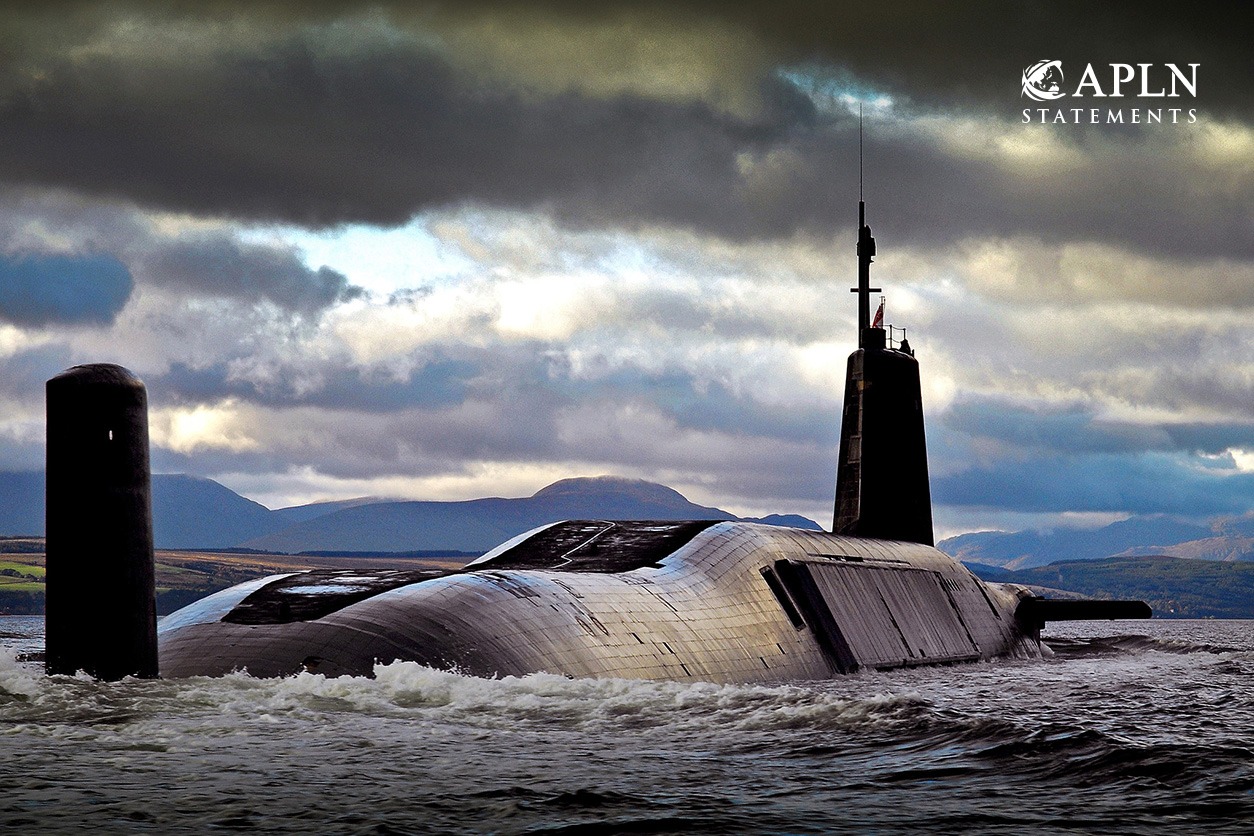Implications of Russia's Recent Long-Range Cruise Missile Test
On 6 April 2021, the Russian military announced that the Russian Navy had for the first time tested a Pacific long-range Kalibr cruise missile on a ground target in the Sea of Japan/East Sea. APLN members and international experts offer their analysis on the technical aspects, the political motivation, and the political, military and policy implications of this missile test.
Dr. Tanya Ogilvie-White
Senior Research Advisor at APLN, Director of the New Zealand Centre for Global Studies (NZCGS), and Senior Fellow at the Coral Bell School of Asia Pacific Affairs, Australian National University.
Russia’s Recent Missile Posturing Confirms Asia-Pacific Negotiations are Overdue
The Asia-Pacific’s missile race is accelerating and the need to address it is getting more urgent. The Russian navy’s launch of its deadly Kalibr missile in the Sea of Japan on 5 April is the most recent development in an uncontrolled missile competition, which was exacerbated by the collapse of the INF Treaty in 2019.
The upgraded 3M-14 Kalibr missile, which Russia launched from its Pacific Fleet for the first time earlier this week, is a sophisticated, dual-capable sea-launched missile, which is designed to fly at extremely low altitudes, helping it evade detection. It provides the Russian military with the ability to launch long-range, surprise attacks against land and sea-based targets in the region.
Although the primary intention behind the launch (and the decision to add the missile to the Pacific Fleet’s inventory) may be to signal to adversaries that Russia is capable of defending its interests along its Far East coast, the upgrade nevertheless significantly enhances Moscow’s power projection capabilities and will increase strategic tensions and escalation risks.
It’s a dangerous development, and it should be raising red flags in capitals across the region. Rather than aping each in their rush for missile superiority, our region’s leaders should be prioritising strategic risk reduction. The best way to do this is via formal regional missile control negotiations, which are long overdue.
Dr Ogilvie-White is currently participating in the UNIDIR and IISS arms control dialogues. She is author of Post-INF Arms Control in the Asia-Pacific: Political Viability and Implementation Challenges (London, UK: IISS, 2020).
Łukasz Kulesa
Researcher at the Polish Institute of International Affairs (PISM) and Senior Associate at the European Leadership Network.
The April test launches of two Kalibr long-range cruise missiles by the Russian frigate Marshal Shaposhnikov from the Sea of Japan could be analyzed at two levels. At the operational level, it is not particularly surprising that this Pacific Fleet ship, which underwent substantial modernization and refit in the years 2016-2021, conducted trials of two variants of its new weaponry (for land-attack and anti-ship missions), as part of its return to service procedure. This is also consistent with the ongoing process of increasing precision strike capabilities of the Russian navy, which has already introduced Kalibr missiles into different classes of its surface ships and submarines, and used them in combat in Syria.
At the political-strategic level, this can perhaps be seen as a signal to other states in the Asia-Pacific region that Russia has the capacity and credible means to back its diplomacy with military force, if and as needed. It also adds to the broader surge of interest and investments in long-range precision-strike missiles, including new hypersonic systems. Various proposals to apply arms control instruments to some of these weapons and reduced their destabilizing impact have been formulated and deserve to be examined, as alternatives to unconstrained missile arms race. But their military utility, verification challenges and dual-capable nature of some systems (including Kalibr) means that there is no silver bullet solution to the challenge.
Dr. Tytti Erästö
Senior Researcher in the SIPRI Nuclear Disarmament, Arms Control and Non-proliferation Programme.
After the cold war, the USA and its allies had an unmatched conventional capability largely based on high-precision weapons. One tool in the US precision-strike arsenal has been the Tomahawk SLCM, first showcased in the 1991 Persian Gulf war.
Russia has long viewed US cruise missiles and other advanced conventional weapons–as well as its missile defenses–as a threat. In addition to relying on nuclear deterrence to compensate for conventional inferiority, Russia sought to catch up with the USA by developing its own advanced capabilities, including cruise missiles.
Kalibr SLCM is one product of these Russian efforts. First deployed in 2015, it has been used as part of the Russian military operation in Syria. The recently tested missile does not seem to represent a significant new capability. Rather, the novel development is the large-scale deployment of the Kalibr SLCMs in the Pacific. The test likely served to train the Pacific Fleet on how to operate the missile.
While Russian threat perceptions tend to focus on its Western border, it arguably views SLCMs in the Pacific as boosting conventional deterrence and providing cover for its ballistic missile submarine (SSBM) bases. In addition to offering a potential capability against China, the Russian SLCMs challenge US power projection efforts near Russia’s Eastern border.
The deployment of Kalibr SLCM adds to the ongoing militarization in the Pacific. Although this missile type is not known to carry nuclear warheads, its dual-use nature could add to escalation risks in crisis.
Dmitry Stefanovich
Research Fellow with the Center for International Security, Primakov Institute of World Economy and International Relations (IMEMO RAS), and a Non-Resident Fellow with the Institute for Peace Research and Security Policy at the University of Hamburg (IFSH).
Launches of Kalibr-family cruise missiles (land-attack 3M14 and anti-ship 3M54) from modernized “Marshall Shaposhnikov” frigate symbolize the long-expected arrival of modern Russian long-range strike capabilities to the Far East*.
Other remaining Udaloy-class ships (originally designed as surface combatants for anti-submarine warfare with limited surface attack capabilities) are also expected to be upgraded with new missiles, while the Russian shipbuilders struggle to deliver modern warships in substantial numbers. Compared to two 8-cell vertical launchers on “Shaposhnikov”, next upgraded ships can have twice as much on board. However, given the anti-submarine warfare legacy, as well as prevalence of relevant threats at the Pacific theater, at least some of the launch cells (or even up to 50% of those) will be occupied with anti-submarine guided missile of the Kalibr family – 91R.
Still, the number of Russian land-attack sea-launched cruise missiles will be increasing rapidly in the nearest future. Six Kilo-class diesel submarines are built for the Russian Pacific fleet in Saint-Petersburg. Two of those together with the newly built Gremyaschiy corvette will arrive to the Pacific in 2021; Four Karakurt-class small missile ships are under construction in Komsomolsk-on-Amur; Legacy Oscar-II-class nuclear submarines are planned to receive relevant upgrades.
Given the death of the INF Treaty, as soon as the US INF-range weapons arrive to the Western Pacific, Russia will be forced to react with testing, producing, and deploying land-based versions of Kalibr missiles in the region, as was announced by the Russian military-political leadership.
Finally, Kalibr missile is dual-capable, but it is considered as a part of the Russian “non-nuclear deterrence” forces. Such duality is challenging, but it is safe to assume that under normal circumstances only conventional warheads are deployed on Kalibr-armed vessels.
*There was some legacy land-attack cruise missile capability with late Soviet submarine-launched nuclear-tipped Granat cruise missiles, but it is generally assumed that those were put in storages under the Presidential Nuclear Initiatives and are being gradually dismantled due to their age.
Image: iStock, Angel Ha



